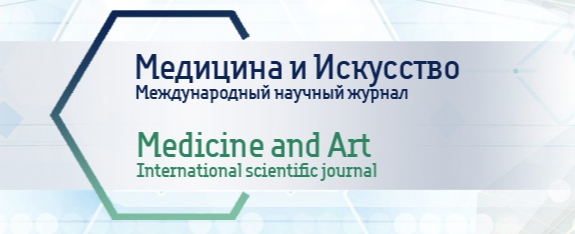Москва, Россия
УДК 004 Информационные технологии. Компьютерные технологии. Теория вычислительных машин и систем
УДК 681.84 Запись и воспроизведение звука. Диктофоны
В статье представлена инновационная технология коррекции неврозов, расстройств развития и стрессовых состояний у детей с помощью компьютеризированного комплекса для музыкально-цветовой терапии, реализуемой через специальную интерактивную лечебную куклу «Ерема» с дистанционным управлением. При этом проведен сравнительный анализ существующего опыта применения музыкальных игрушек в детской коррекционной практике с техническими особенностями и преимуществами, которые дает работа с компьютеризированной системой музыкально-цветовой психотерапии.
стресс, неврозы, аутизм, кукла, блютус, компьютер, психотерапия, музыкальная терапия
1. Безруких, М.М. Здоровьесберегающая школа / М.М. Безруких. – М.: МГПИ, 2008. – 222 с. [Bezrukikh, M.M. Health-saving school / M.M. Armless. – M.: MGPI, 2008. – 222 p.] (In Russian).
2. Письмо Министерства образования России от 17 мая 1995 г. № 61/19-12 «О психолого-педагогических требова¬ниях к играм и игрушкам в современных условиях» // Вестн. образования. 1995. № 7. [Letter of the Ministry of Education of Russia dated May 17, 1995 №. 61/19-12 «On psychological and pedagogical requirements for games and toys in modern conditions» // Vestn. education. 1995. No. 7.] (In Russian).
3. Соколова, А.В. Игры и игрушки для детей раннего и дошкольного возраста: учеб.-метод. пособие / А.В. Соколова. – Нижний Тагил: Нижнетагильский государственный социально-педагогический институт (филиал) ФГАОУ ВО «Российский государственный профессионально-педагогический университет», 2018. – 96 с. [Sokolova, A.V. Games and toys for children of early and preschool age: educational method. allowance / A.V. Sokolova. – Nizhny Tagil: Nizhny Tagil State Social Pedagogical Institute (branch) of the Federal State Autonomous Educational Institution of Higher Education “Russian State Vocational Pedagogical University”, 2018. – 96 p.] (In Russian).
4. Выготский, Л. С. Педагогическая психология / Л. С. Выготский. - Москва: Педагогика-пресс, 1999. - 533, [1] с.; 21 см. - (Психология: классические труды). [Vygotsky, L. S. Educational psychology / L. S. Vygotsky. - Moscow: Pedagogy-press, 1999. - 533, [1] p.; 21 cm. - (Psychology: classic works).] (In Russian).
5. Смирнова Е.О. Современная детская субкультура // Консультативная психология и психотерапия. 2015. Том 23. № 4. С. 25–35. doihttps://doi.org/10.17759/cpp.2015230403 Smirnova E.O. Modern children's subculture // Consultative psychology and psychotherapy. 2015. Vol. 23. No. 4. pp. 25–35.
6. Абраменкова, В.В. Во что играют наши дети? Игрушка и АнтиИгрушка / В.В. Абраменкова. - М.: Яуза, Эксмо, Лепта Книга, 2006. - 640 с. [Abramenkova, V.V. What do our children play? Toy and Anti-Toy / V.V. Abramenkova. - M.: Yauza, Eksmo, Lepta Book, 2006. - 640 p.] (In Russian).
7. Иванова Е.С. Психологический анализ специфики изменения образа куклы // Вестн. ТГУ. 2011. Вып. 12 (104). С. 209–213. [Ivanova E.S. Psychological analysis of the specifics of changing the image of a doll // Vestn. TSU. 2011. Issue. 12 (104). pp. 209–213.] (In Russian).
8. Разумов А.Н., Шушарджан С.В. Методы музыкальной терапии (пособие для врачей). М., изд. РНЦВМ и К МЗ РФ, 2002. 29 c. [Razumov A.N., Shushardzhan S.V. Music therapy methods (a manual for doctors). Moscow, izd. RNCVM i K MZ RF, 2002. 29 p.] (In Russian).
9. Шушарджан С.В. Медицина и искусство: парадигма синергии // Медицина и Искусство. 2023; 1(1):10-33. DOI: https://doi.org/10.29039/ 2949-2165- 2023-1-1-10-33. [Shushardzhan S.V. Medicine and art: the paradigm of synergy. Medicine and Art. 2023; 1(1):10-33.]. (In Russian). DOI: https://doi.org/10.29039/2949-2165-2023-1-1-10-33
10. Blum, K. Reward deficiency syndrome / K. Blum, E.R. Braverman, J.G. Cull, D.E. Comings // J. Am. Sci. – 1996. – Vol.84. – 132 p.
11. Blum, K. Reward deficiency syndrome: a biogenetic model for the diagnosis and treatment of impulsive, addictive, and compulsive behaviors / K. Blum, E.R. Braverman, J.M. Holder // J. Psychoactive Drugs. – 2000. –Vol.32. – P.1–112.
12. Blum, K. The D2 dopamine receptor gene as a determinant of reward deficiency syndrome / K. Blum, R.C. Wood, P.J. Sheridan // J. Royal Soc. Med. – 1996. – Vol.89, N7. – P.396–400.
13. Blum, K. Studies of dopaminergic genes in reward deficiency syndrome (RDS) Subjects: selecting appropriate phenotypes for reward dependence behaviors / K. Blum, L. Amanda, C. Chen, M. Oscar- Berman // Int. J. Environ. Res. Public Health. – 2011. – Vol.8. – P.4425–4459. www.mdpi.com/ journal/ijerph
14. Blum, K. «Liking» and «Wanting» linked to reward deficiency syndrome (RDS): hypothesizing differential responsivity in brain reward circuitry / K.Blum, E.Gardnerb, M.Oscar-Bermanc, M.Golda // J. Curr. Pharm. Design. – 2011. – Vol.17. – P.1–6.
15. Shushardzhan S.V., Petoukhov S.V. (2020) Engineering in the Scientific Music Therapy and Acoustic Biotechnologies. In: Hu Z., Petoukhov S., He M. (eds) Advances in Artificial Systems for Medicine and Education III. AIMEE 2019. Advances in Intelligent Systems and Computing, vol 1126, p.273-282. Springer, Cham
16. Hu, Z.B., Petoukhov, S.V.: Generalized crystallography, the genetic system and biochemi cal esthetics. Struct. Chem. 28(1), 239–247 (2017). https://doi.org/10.1007/s11224-016-0880-0.
17. Angadi, S.A., Hatture, S.M.: Biometric person identification system: a multimodal approach employing spectral graph characteristics of hand geometry and palmprint. Int. J. Intell. Syst. Appl. (IJISA), 3, 48–58 (2016). http://www.mecs-press.org/ijisa/ijisa-v8-n3/IJISA-V8-N3-6.
18. Hata, R., Akhand, M.A.H., Islam, M.M., Murase, K.: Simplified real-, complex-, and quaternion-valued neuro-fuzzy learning algorithms. Int. J. Intell. Syst.Appl. (IJISA), 10(5),1–13 (2018). https://doi.org/10.5815/ijisa.2018.05.01
19. Awadalla, M.H.A.: Spiking neural network and bull genetic algorithm for active vibration control. Int. J. Intell. Syst. Appl. (IJISA), 10(2), 17–26 (2018). https://doi.org/10.5815/ijisa. 2018.02.02
20. Shushardzhan S.V. The method of neuro-hormonal correction and rejuvenation with the help of musical-acoustic effects. Patent No. 2518538. Registered in the State Register of Inventions of the Russian Federation (2014)
21. Еремина Н.И. Детская музыко-арт-терапия / Н.И. Еремина; под ред. С.В. Шушарджана. — М.: КнигИздат, 2024. - 236 с. [Eremina N.I. Children's music and art therapy / N.I. Eremina; edited by S.V. Shushardzhan. - M.: KnigIzdat, 2024. - 236 p.] (In Russian).








